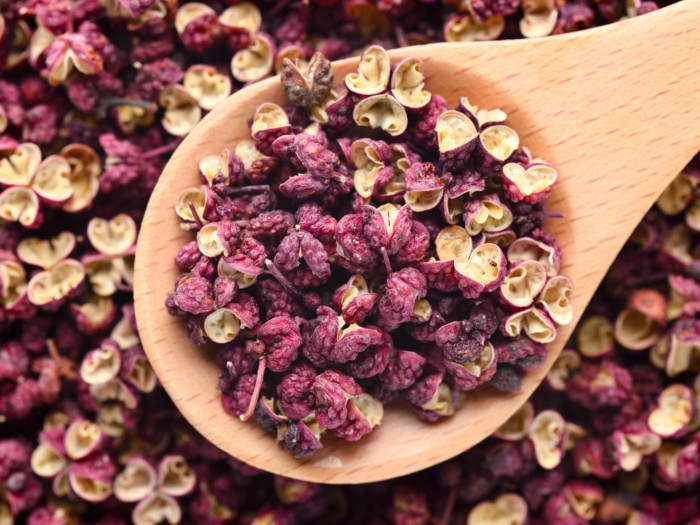Using the right Szechuan peppercorn substitutes will keep your meal spiced with just the right amount of kick. Szechuan peppercorns are a key ingredient to many Chinese and Asian recipes. They are not actually peppercorns at all, but rather the dried husks from the prickly ash tree. Unlike peppercorns and chilies, Szechuan peppercorns don’t actually produce any heat. Instead, they have a numbing, tingly effect on the tastebuds, reminiscent of menthol and citrus. They are often paired in fiery dishes with chilies since the numbing promotes the spiciness of the flavor. [1]
Szechuan Peppercorn Substitutes
Unfortunately, precise Szechuan peppercorn substitutes are few and far between, and many people will tell you to not even try to find a substitute. However, Szechuan peppercorns can be hard to find in most stores, and they are notoriously expensive. The best Szechuan peppercorn substitutes may include grains of paradise, Tasmanian pepper, Tellicherry peppercorns, black pepper, and coriander among others. They may not entirely replace Szechuan peppercorns but will come close to matching the flavor profile.

Szechuan pepper is not spicy hot like a chile pepper. Photo Credit: Shutterstock
Grains of Paradise
Grains of Paradise, sometimes called alligator pepper or African pepper, is a common North African spice. It is not actually a peppercorn, although it looks like one, but instead belongs to the ginger family. The flavor is similar to cardamom, clove, and lemon. [2]
Tasmanian Pepper
These little dark berries are not related to peppercorns either, but they look very much the same. The smell of Tasmanian pepper is similar to juniper, and the flavor is peppery, woodsy, and floral, with some sweetness. As a substitute for Szechuan peppercorn, it will be a little milder, and you can use a bit more of it.
Tellicherry Peppercorns
Tellicherry peppercorns may be used to refer only to peppercorns grown in a certain region of India. These days, however, Tellicherry means any large peppercorn that has been left on the plant longer, allowing it to mature and ripen more than regular black peppercorns. The longer time on the vine allows the flavors to deepen, giving them a woodsy, citrus flavor, which makes them a good substitute for Szechuan peppercorn. Tellicherry is considered the highest quality of peppercorn. [3]
Black Pepper and Coriander
These two common spices together may recreate some of the pine flavor and citrus notes of Szechuan peppercorns. Use fresh pepper for the most heat possible, and fresh ground coriander for a pungent, fresh, citrus flavor.
Black Pepper
If you’re really in a bind, you can use common black pepper as a substitute. This may have none of the complexity of flavor, but it can support the peppery heat of the dish. Use fresh ground black pepper if possible. A dash of lemon juice will help as well.
